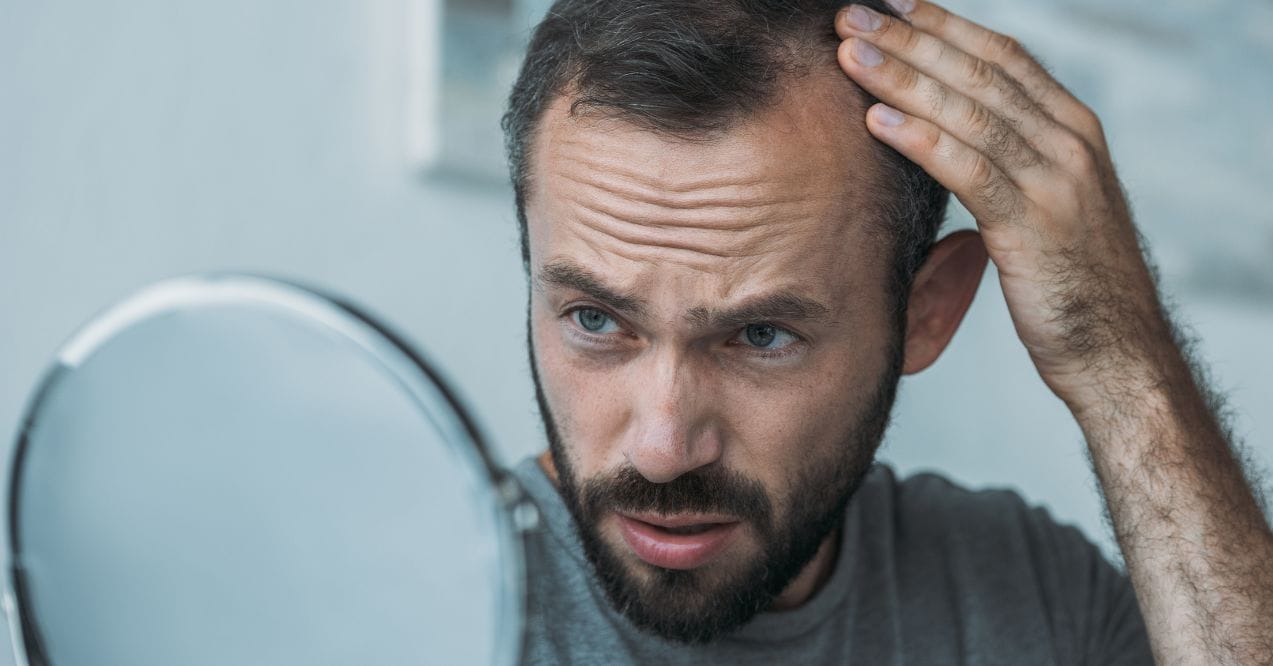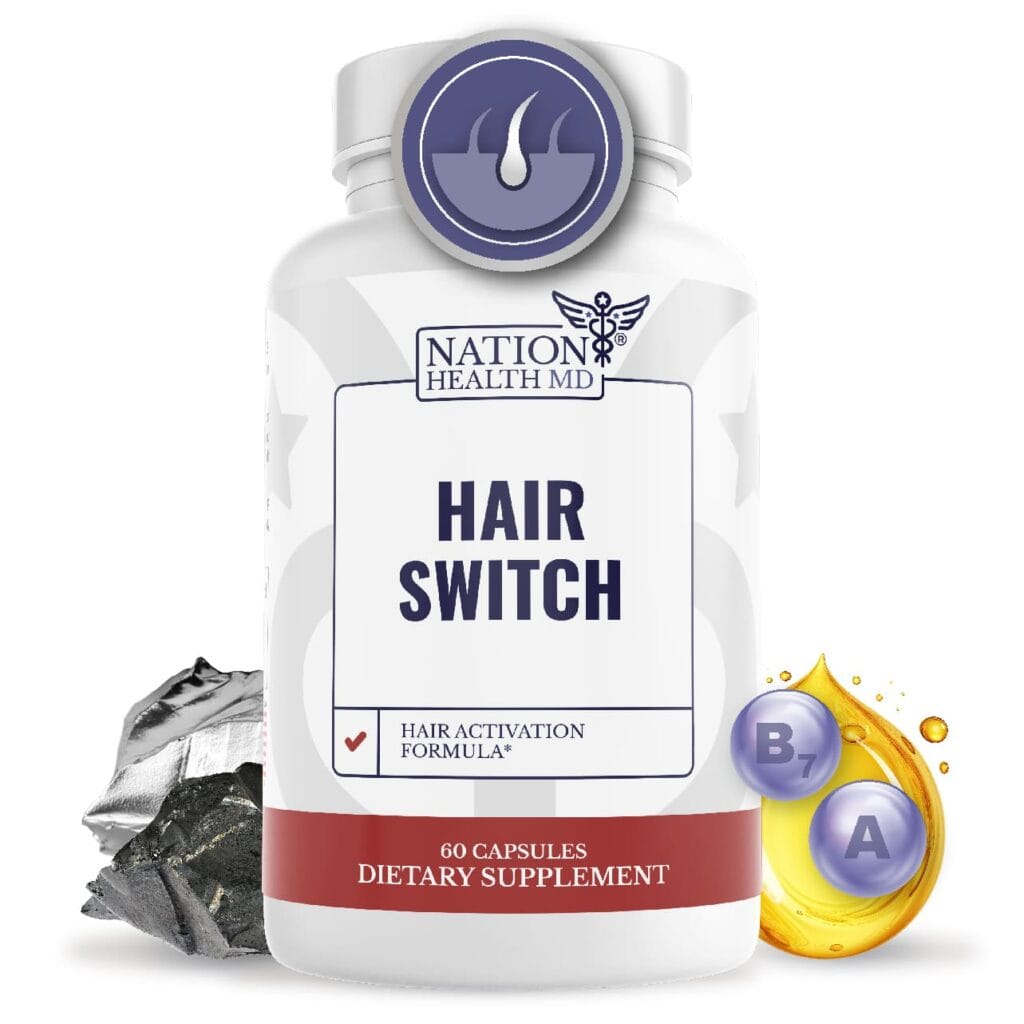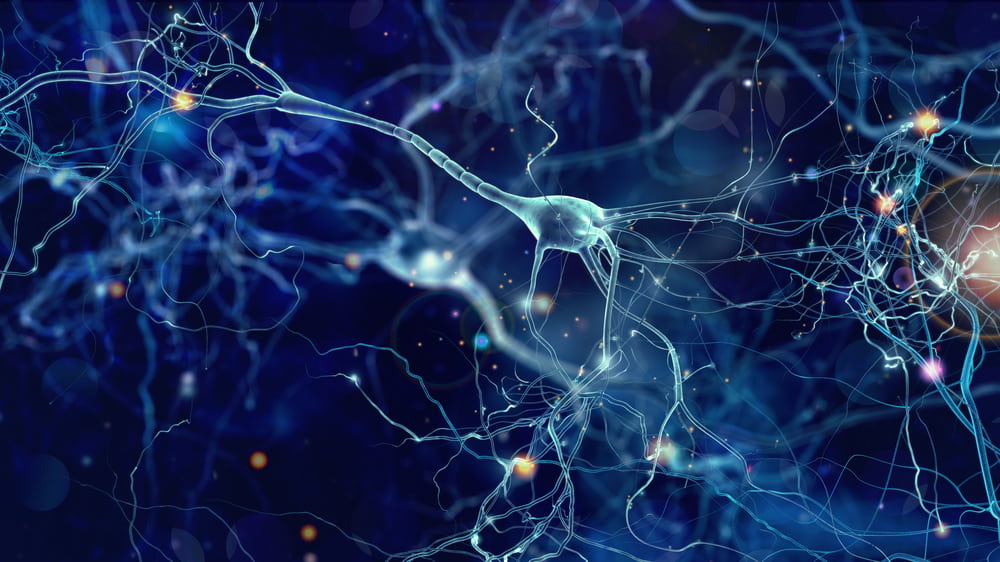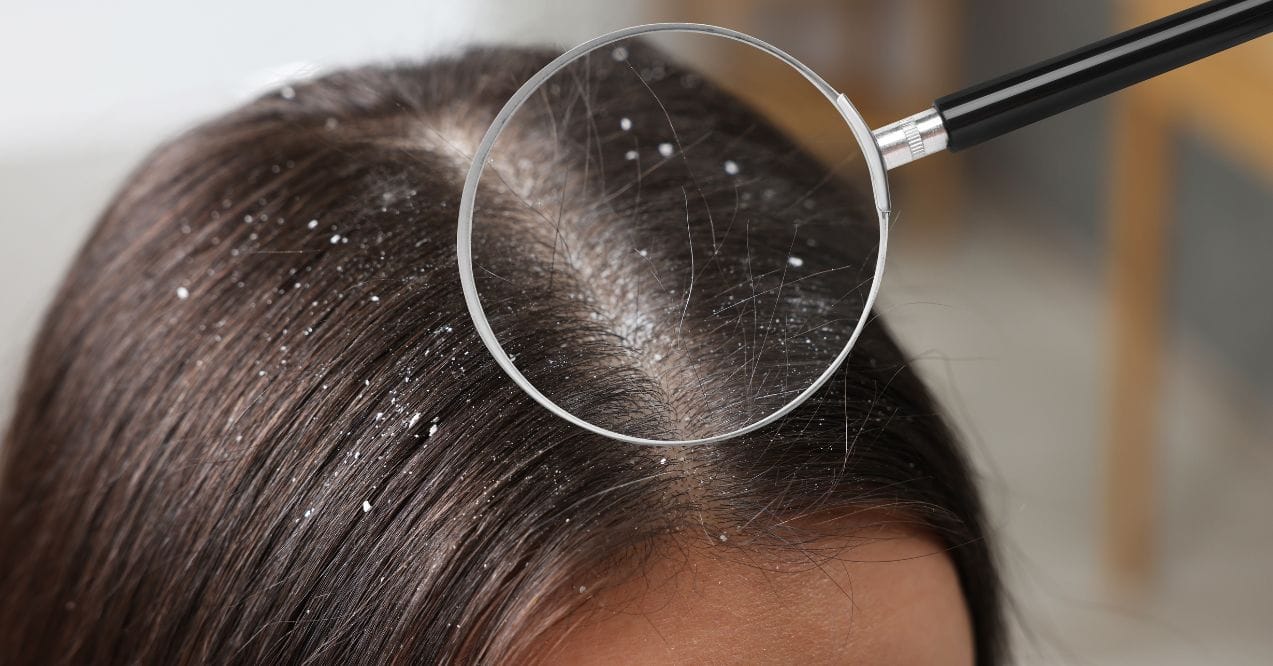Can High Testosterone Cause Hair Loss?
Medically reviewed by our experts


Can high testosterone cause hair loss? This question concerns many men as they age. While testosterone itself isn’t directly responsible, its byproduct dihydrotestosterone (DHT) plays the crucial role in hair thinning. DHT affects hair follicles in genetically predisposed individuals, leading to progressive hair loss patterns. Understanding this relationship can help identify effective management strategies.
Key Article Findings
- High testosterone itself doesn’t directly cause hair loss – DHT, a byproduct, plays a key role.
- Genetics determine how DHT affects individual hair follicles.
- Treatments like DHT blockers and minoxidil can help with hair regrowth.
- Understanding hormonal pathways enables more effective hair loss prevention strategies.
Understanding Testosterone and DHT
The male hormone plays a vital role in development, muscle maintenance, and reproductive function. This powerful compound circulates throughout the body, supporting energy levels and overall vitality as we age.
Within the body, an enzyme called 5-alpha reductase transforms testosterone into dihydrotestosterone (DHT). While both are androgens, DHT binds to receptors with significantly greater strength – up to five times more potently.
DHT affects different tissues uniquely. In some areas, it promotes healthy function, but in scalp tissues, it can trigger miniaturization of hair follicles in genetically susceptible individuals. So, does high testosterone cause hair loss directly? Not exactly – it’s the conversion to DHT that matters.
Over time, elevated DHT levels may impair blood flow to hair follicles, reducing nutrient delivery and oxygen supply. This process gradually shrinks follicles, leading to thinner, weaker hair that eventually stops growing entirely.
The Science Behind Hair Growth and Loss
Understanding the natural cycle of hair growth helps explain how hormonal changes can lead to thinning over time.
The Role of Hair Follicles and Androgen Receptors
Hair follicles contain specialized androgen receptors – protein structures that respond to hormones like DHT. The scalp’s follicles are particularly sensitive to these interactions. Will high testosterone cause hair loss depends on how readily it converts to DHT and how sensitive your follicle receptors are to this compound.
When DHT binds to these receptors, it triggers a cascade of cellular events that gradually miniaturize the follicle, reducing its ability to produce healthy hair strands.
How Genetics and Hormones Interact
Your genetic makeup largely determines your susceptibility to DHT’s effects. Specific inherited traits affect both DHT production levels and receptor sensitivity in scalp tissues.
Some individuals inherit hair follicles with heightened responsiveness to even normal hormone levels. Others may produce more 5-alpha reductase enzyme, leading to higher DHT conversion rates despite normal testosterone levels.
This genetic predisposition explains why hair thinning patterns often follow family lines and why two people with identical hormone levels might experience dramatically different outcomes.
Does High Testosterone Cause Baldness?
The relationship between baldness and testosterone is more complex than many assume. Research consistently shows that elevated testosterone levels alone don’t directly trigger hair loss. Instead, the conversion rate to DHT and genetic sensitivity of hair follicles play the decisive roles.
Consider two hypothetical men, both with above-average testosterone levels:
James, 65, has high testosterone and significant hair thinning. His body efficiently converts testosterone to DHT, and his scalp follicles are genetically programmed with numerous androgen receptors. Despite maintaining healthy habits, his hair loss progressed steadily after age 40.
Michael, 67, also has high testosterone but maintains a full head of hair. His body produces less 5-alpha reductase enzyme, resulting in lower DHT conversion. Additionally, his follicles contain fewer androgen receptors, making them less responsive to DHT’s effects.
Does too much testosterone cause hair loss directly? The evidence suggests otherwise. Many men with elevated testosterone maintain thick hair throughout life, while others with normal or even lower testosterone levels experience significant thinning.
The critical factors are:
- Genetic predisposition to follicle sensitivity
- Activity levels of 5-alpha reductase enzyme
- Distribution and density of androgen receptors in scalp tissue
- Duration of DHT exposure over time
Understanding these distinctions helps clarify why hair loss patterns vary so widely among men, even those with similar hormone profiles.
How to Prevent or Treat Hair Loss Related to Hormones
Managing hormone-related hair thinning requires a multifaceted approach that works best when started early. Effective strategies for supporting hair health include:
- Maintaining optimal nutrition with adequate protein, vitamins, and minerals
- Regular scalp massage to promote blood circulation
- Managing stress through regular physical activity and relaxation techniques
- Avoiding harsh hair treatments and excessive heat styling
- Minimizing environmental damage from sun exposure and pollution
- Ensuring adequate sleep for cellular repair and regeneration
Natural and Pharmaceutical DHT Blockers
DHT blockers work by inhibiting the 5-alpha reductase enzyme that converts testosterone to DHT. This reduces DHT’s impact on vulnerable hair follicles.
Several natural compounds show promising results in scientific studies:
- Saw palmetto extract may help maintain hair density by moderating DHT conversion
- Pumpkin seed oil contains beneficial compounds that support scalp health
- Green tea extracts provide antioxidant properties that may benefit follicle function
For those seeking a comprehensive approach to follicle health, Hair Switch offers a natural solution aligned with these principles. This formula contains 17 natural ingredients that work together to support the three-step process needed for healthy hair maintenance.
Key components like Biotin promote protein structure, Vitamin A supports scalp tissue renewal, and Selenium provides antioxidant properties that maintain follicle function. Hair Switch complements the body’s natural processes by nourishing follicles from within.
Importance of Early Intervention and Professional Guidance
Addressing hormone-related hair changes works best when started early. Professional evaluation offers several advantages:
- Comprehensive assessment identifies the specific cause of hair changes
- Professional testing can determine hormone levels and conversion rates
- Personalized recommendations based on individual health profile
- Monitoring of progress and adjustment of approaches as needed
- Identification of potential underlying health concerns
A healthcare provider can help determine whether your hair changes stem from hormonal factors, nutritional deficiencies, or other causes. They can recommend appropriate interventions based on your specific situation and health history.
Common Myths About Testosterone and Hair Loss
Several misconceptions about hair loss and hormones persist despite scientific evidence to the contrary. Let’s examine some common myths:
Myth 1: All men with high testosterone levels develop baldness
Does high testosterone cause baldness in everyone? No. Many men with elevated hormone levels maintain full heads of hair throughout life. The receding hairline pattern depends more on genetic sensitivity to DHT than on testosterone levels themselves.
Myth 2: Shaving or cutting hair makes it grow back thicker
This widespread belief has no scientific basis. Hair thickness is determined at the follicle level, not by external cutting. Shaving creates a blunt edge that temporarily feels coarser but doesn’t change the hair’s actual structure.
Myth 3: Hair loss on the scalp means increased body hair growth
While DHT can promote facial and body hair growth as a side effect while simultaneously contributing to scalp hair thinning, the processes aren’t directly connected. Different body regions respond to androgens in genetically programmed ways.
Myth 4: Dandruff directly causes permanent hair loss
Can dandruff cause hair loss permanently? This is a common misconception. While scalp flaking can create inflammation that temporarily disrupts the hair cycle, it doesn’t directly cause follicle miniaturization. Addressing the underlying scalp condition can help maintain healthy growth cycles.
Myth 4: Hair loss is solely hormonal
In reality, multiple factors contribute to hair changes, including genetics, aging, nutritional status, stress levels, and environmental factors. Comprehensive approaches considering all these elements typically yield better results.
Conclusion
So, can high testosterone cause hair loss directly? Evidence shows it’s not the testosterone itself, but rather DHT and genetic sensitivity that determine your outcome. Early intervention offers the best chance of maintaining your hair. Understanding these factors empowers you to take control of your hair health using evidence-based solutions.
Testosterone itself doesn’t directly cause hair loss. It’s DHT, a more potent byproduct of testosterone, that binds to follicle receptors. DHT shrinks follicles in genetically susceptible individuals, while testosterone alone doesn’t have this effect.
Lowering testosterone alone isn’t an effective strategy for preventing hair loss. It’s more important to address DHT conversion and receptor sensitivity. Many men with normal or even low testosterone still experience hair loss due to genetic predisposition.
Natural DHT-moderating compounds like saw palmetto generally have good safety profiles for long-term use. Always consult a healthcare provider before starting any regimen, especially those involving supplements, to ensure they’re appropriate for your specific health situation.
Understanding how testosterone affects men. (2016). National Institutes of Health (NIH).
Kinter, K. J., et al. (2023). Biochemistry, dihydrotestosterone. StatPearls – NCBI Bookshelf.
Jewell, T. (2024). What you need to know about DHT and hair loss. Healthline.
Grymowicz, M., et al. (2020). Hormonal effects on hair follicles. International Journal of Molecular Sciences, 21(15), 5342.
Yetman, D. (2020). How to fight the baldness gene (and other factors). Healthline.
Tips for healthy hair. (n.d.).
Evron, E., et al. (2020). Natural hair supplement: friend or foe? Saw Palmetto, a Systematic review in Alopecia. Skin Appendage Disorders, 6(6), 329–337.
Clinic, C. (2025). What pumpkin seed oil could do for your hair. Cleveland Clinic.
Cpt, K. D. M. R. (2019). Green tea for hair: A complete guide. Healthline.
Huizen, J. (2024). Does biotin help hair growth?
VanBuren, C. A., & Everts, H. B. (2022). Vitamin A in Skin and hair: An update. Nutrients, 14(14), 2952.
Costa, V. T., Melo, D., & Matsunaga, A. (2018). The relevance of selenium to alopecias. International Journal of Trichology, 10(2), 92.
Popular Articles
Advertisement. This site offers health, wellness, fitness and nutritional information and is designed for educational purposes only. You should not rely on this information as a substitute for, nor does it replace, professional medical advice, diagnosis, or treatment. If you have any concerns or questions about your health, you should always consult with a physician or other health-care professional. Do not disregard, avoid or delay obtaining medical or health related advice from your health-care professional because of something you may have read on this site. The use of any information provided on this site is solely at your own risk.








